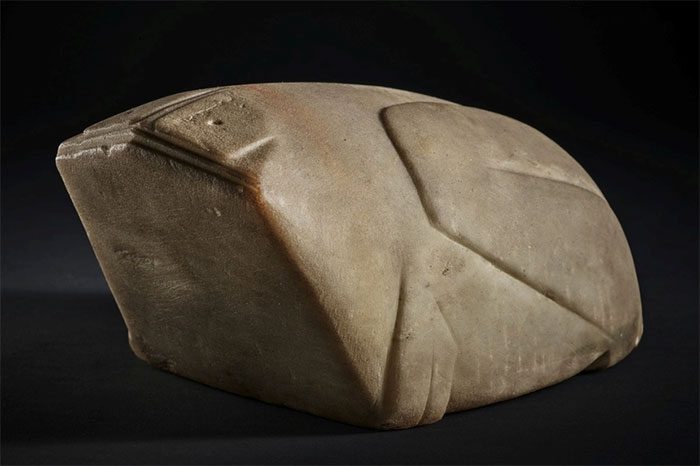A “Stone Frog” Approximately 3,000 Years Old Sold for Over 29 Billion VND: What Makes It Special?
This “stone frog,” valued at a fortune, turns out to be a rare artifact from approximately 3,000 years ago in China. It is a marble statue of a frog, originating from the Shang Dynasty (circa 1766 BC – 1122 BC).
The ancient statue measures 25 cm in length and is part of a private collection in New York, USA. It was recently sold at a Sotheby’s auction in New York on September 19, for a price of $1.2 million (approximately over 29 billion VND).
Experts state that this 3,000-year-old frog statue is intricately carved. Specifically, the statue employs skilled carving techniques to depict a stylized frog. Notably, the frog’s hind legs are carefully shaped in high relief, featuring grooves in the middle. The ancient craftsman also innovatively created the frog’s eyes by drilling two small holes and placing them in square sockets.

The frog statue dating back approximately 3,000 years.
Experts explain that the Shang people believed in the “afterlife”, making ancestor worship and rituals crucial in their lives. Thus, artworks from this dynasty mainly consisted of bronze vessels crafted for religious purposes.
Additionally, numerous artifacts and relics for Shang Dynasty rituals were made from jade, bone, or ivory. However, items carved from marble, like the aforementioned frog, are extremely rare.
As of now, only three marble frog statues from the Shang Dynasty have been discovered. Among these, two share the same origin, size, and shape. One statue is part of Richard Bull’s collection and was auctioned at Sotheby’s New York in 1983. Another previously owned by the “Godfather of Chinese Antiques”, Giuseppe Eskenazi, was sold at Sotheby’s Hong Kong in 2022 for around $3.67 million.
The third statue is the one that just sold for $1.2 million.
What Does the $1.2 Million Statue Represent?

The intricately crafted frog statue with special significance.
According to experts’ research, animal motifs are commonly found in Shang Dynasty art. The people of this dynasty believed that many animals served as conduits for communication with their gods or ancestors. For instance, the owl, a nocturnal bird, was thought to be the god of dreams and a messenger linking humans with the spiritual world.
However, the significance of frog motifs in artifacts remains a topic of debate among scholars. Some view frogs as symbols of reproduction due to their prolific breeding. Others argue that frogs represent prosperity because they often croak loudly before it rains.

The frog statue is believed to symbolize prosperity.
The Shang Dynasty, also known as the Yin Dynasty, is the first historically confirmed dynasty in China.
Historical records indicate that the Shang Dynasty had 30 kings, starting with King Cheng Tang and ultimately falling to King Zhou, also known as King Zhou. The Shang Dynasty emerged from the western region of the Yellow River basin and later unified the northern plains of China.
This dynasty was structured as a decentralized feudal system, meaning that vassal states maintained a certain degree of independence in managing and governing their territories, while the king had direct responsibilities towards the major vassals. Notably, all vassal states were required to fulfill obligations regarding taxation, tributes, and duties as mandated by their sovereign.


















































